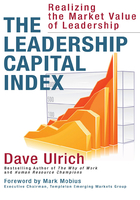
Physical Presence and Vitality
First impressions often linger. The way a leader looks, dresses, talks, and moves can create a strong sense of style, implying that such a person is bound to be effective on the job. But as orchestra selections have demonstrated by blind auditions, physical first impressions do not always predict long-term success.
Investors cannot do blind auditions of leaders, but they need to go beyond first impressions and develop insights on the leader’s sustainable presence. Of course, leadership presence is not one-size-fits-all—leaders come in all shapes, sizes, and styles. But investors have more confidence in leaders with presence, which often starts with positive body language (eye contact, posture, elocution) but goes beyond appearance to sheer vitality.
Physical presence begins with basic health and well-being. Investors should note a leader’s nutrition, exercise, and sleep habits. These habits can be tracked through a medical exam for key person insurance or for other corporate health requirements. Top CEOs and government officials (such as presidents, prime ministers, cabinet leaders) often are required to undergo annual physicals and monitoring of their health. Leaders who take care of themselves physically often have more energy for the demands of their job, reduce the risk of physical ailments that may disrupt their work, and communicate confidence by their physical vigor.
In addition, physical presence is communicated through capacity for work. Leaders who succeed have a high capacity for sustained work output, with high work endurance and stamina. People with a traditional nine-to-five work ethic may be unlikely to have the vitality for the demands of top leadership. Working hard does not mean a lack of work/life balance, but investors should have confidence in the work capacity of their prospect’s leaders. This means that investors can look at work hours, checking for the personal energy and vigor required of successful leaders. Investors and others can sense leadership vitality by observing the leader’s pace and work habits.
In one case, through inquiry, an investor discovered that in the targeted organization, a business crisis arose in which a team was required to work over a weekend to meet the needs of a major client. For this investor, vitality means being willing to pay the personal price when required to accomplish a task. Another simple signal of vitality has to do with global phone calls: when are these made? When convenient only to the leader or to others? One investor went so far as to say, "Is there evidence of leaders' being willing to work long weekends? You want folks who are not balanced all the time; who are a bit work crazy and obsessed with the work at hand.”
Judgment of leadership presence may be personal and subjective, but it needs to be a perspective shared by many people who work with the leader to indicate that the leader has the physical well-being and vitality to meet work requirements.
Possible indicators:
 Does the leader maintain adequate diet, exercise, and sleep habits?
Does the leader maintain adequate diet, exercise, and sleep habits?
 Does the leader have a current physical exam?
Does the leader have a current physical exam?
 Does the leader have the vitality to meet the demands of the job?
Does the leader have the vitality to meet the demands of the job?